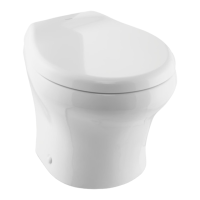
Do you have a question about the Dometic SeaLand VacuFlush 4800 Series and is the answer not in the manual?
| Flush System | Vacuum Flush |
|---|---|
| Bowl Material | Vitreous china |
| Seat Material | Plastic |
| Seat Height | Standard height |
| Bowl Shape | Elongated |
| Discharge Outlet | 1.5" (38 mm) |
| Material | Vitreous china bowl, plastic components |
| Water Usage per Flush | 0.5 gallons (1.9 liters) |
| Installation Type | Floor mount |
| Operating Voltage | 12V DC |
| Pump Type | Vacuum pump |
| Holding Tank Compatibility | Yes |
Warning about flooding due to improper seacock installation or flexible hose use.
Warning about flooding from raw water systems with automatic pumps.
Warning about flooding due to not turning off electrical power before servicing.
Warning about using correct electrical components to prevent shock or fire.
Caution about holding tank overfilling and damage, recommends safety relay.
Describes SeaLand vacuum sources providing vacuum energy.
Describes SeaLand holding tank systems and their features.
Ensure guests understand toilet and seacock operation and labels.
Shut off electrical power before servicing and do not leave power on when unattended.
Avoid using solvents, alcohol, chlorine, or caustic chemicals in the system.
Refer to troubleshooting and contact support if issues persist.
Use the "Add Water" switch to achieve the desired water level.
Press Flush switch; wait for vacuum recharge; heed status panel lights.
Avoid flushing items other than waste and tissue to prevent clogs.
Use SeaLand cleaner or approved non-abrasive cleaners for bowl cleaning.
Avoid abrasives, caustic chemicals, and alcohol/petroleum-based cleaners.
Steps to clear discharge lines before extended periods of non-use.
Regular checks like hose joints and filter screens.
Periodic replacement of parts like duckbill valves and seals.
Requirements for vacuum generator/pump and reference to warnings.
Installation notes for flushing with fresh water.
Installation notes for flushing with raw water.
Specifies 1.5-inch ID flexible hose and mentions OdorSafe Plus hose.
Explains purpose and installation height of vented loops to prevent back-siphoning.
Discusses tank capacity and maintenance.
Refers to wiring diagram.
Specifies requirements for marine quality valves.
Refers to mounting template.
Factors for selecting deodorants like liquid vs. granulated, formaldehyde content.
How to add deodorant, frequency, and tank cleaning.
Recommends SeaLand rapid-dissolving tissue over household brands.
Diagnoses issues with fuse, wiring, or defective diode.
Diagnoses electrical failures, switch, or motor issues.
Diagnoses blockages, wiring, water valve, or diode issues.
Diagnoses electrical failures or defective flush switch.
Diagnoses debris in water valve or defective water valve.
Diagnoses electrical shorts or cam switch/linkage issues.
Diagnoses drag, seal issues, or defective spring assembly.
Diagnoses wiring or cam switch issues.
Diagnoses cam switch adjustment or rotor shaft issues.
Diagnoses rotor shaft, spring, or drag issues.
Addresses lubrication needs for flush ball and linkage.
Diagnoses worn seals, flush ball, or loose mounting bolts.
Diagnoses defective diode D1.
Diagnoses connections, water valve, bowl seal, or mounting bolts.
Diagnoses wiring at terminal block, switch, or status panel.
Diagnoses wiring, switch, relay, or status panel issues.
Diagnoses power, shut-down relay, or blockage in toilet base.
Steps for safely removing the toilet from the floor.
Instructions for sliding cam switch down to fix over-travel.
Instructions for sliding cam switch up to fix under-travel.
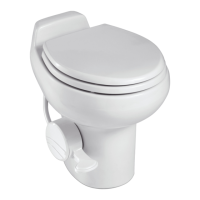
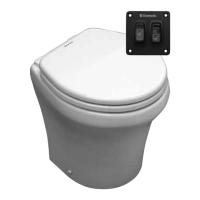
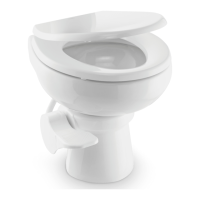
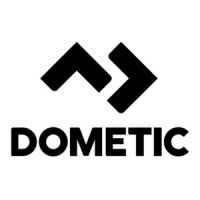
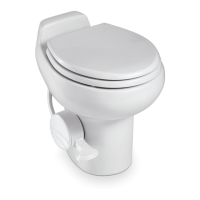
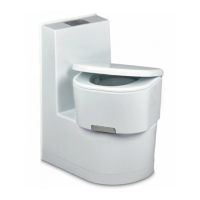

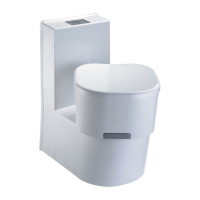



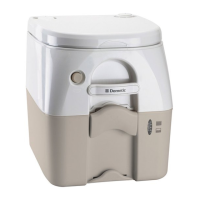
